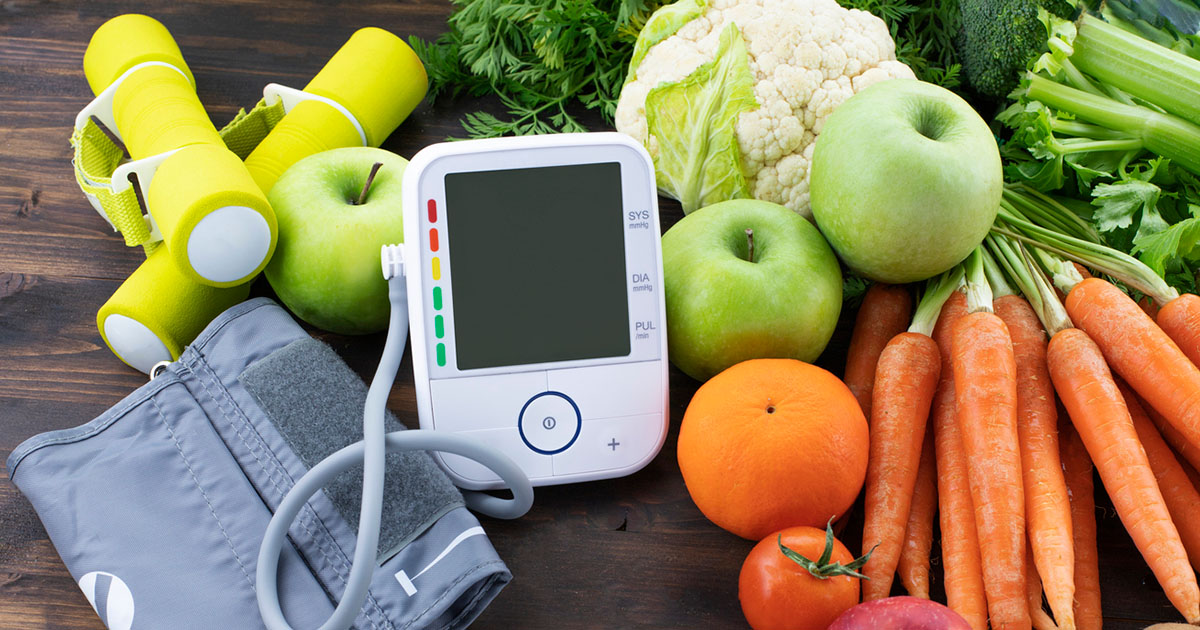The changing face of diabetes through the ages
Clare Hambling, GP and PCDS Chair
Children
- The prevalence of type 1 and type 2 diabetes continues to rise globally.
- The EURODIAB registry shows that the prevalence of type 1 diabetes in children of the 26 contributing nations is increasing on average by around 3% per annum.
- The National Paediatric Diabetes Audit reported that 2809 children were newly diagnosed with type 1 diabetes in 2017/18. Early diagnosis remains crucial to avoiding presentation with diabetic ketoacidosis (DKA). Remember the 4Ts: toilet, thirsty, tired and thinner.
- Children with type 1 diabetes are more likely than adults to receive all care processes and to achieve a target HbA1c of ≤58 mmol/mol. Most children and young people with diabetes also receive a psychological assessment, with about one third assessed as needing more support.
- There is growing use of technologies to support paediatric diabetes care.
- The number of children being diagnosed with type 2 diabetes is also increasing. Consider a diagnosis of type 2 diabetes in a child or young person with:
- Strong family history of type 2 diabetes.
- Obesity at presentation.
- Black or Asian family origin.
- No insulin requirement, or have an insulin requirement <0.5 units/kg body weight/day after partial remission phase.
- Evidence of insulin resistance (e.g. acanthosis nigricans).
- Type 2 diabetes in children is more aggressive than in adults, with limited options for management. 44.9% of children with type 2 diabetes have high blood pressure and 22.1% have albuminuria. Children with type 2 diabetes should always be cared for in specialist paediatric diabetes services.
Adults and older people
- Remission of type 2 diabetes can be diagnosed when a person with confirmed type 2 diabetes has achieved all three of the following:
2. Fasting plasma glucose or HbA1c below WHO diagnostic thresholds (<7 mmol/L or <48 mmol/mol, respectively) on two occasions separated by at least 6 months.
3. Attainment of glycaemic parameters following complete cessation of all glucose-lowering therapies.
- There is no internationally accepted definition of remission. The parameters above are designed to encourage motivation and sustained weight loss to achieve remission over a longer period.
- Emphasise that weight loss must be sustained – otherwise there is a risk of type 2 diabetes returning.
- Although remission is generally achieved through intentional or active weight loss, it might also occur because of unintended weight loss (e.g. frailty).
- Practicalities:
- Code “remission”, not “diabetes resolved”.
- Ensure robust mechanisms are in place for active recall and review, including all annual review care processes.
Pancreatic cancer
- The incidence of pancreatic cancer has increased 2.3-fold over the past 30 years. This is due to ageing, population growth, obesity and diabetes.
- There is a slightly higher incidence in males than females. Smoking is a risk factor.
- It has only a 5% 5-year survival rate.
- For suspected pancreatic cancer, NICE guidance (NG12) advises:
- Refer people for an appointment within 2 weeks for all aged ≥40 years with jaundice.
- Consider urgent CT scan (or ultrasound) in people aged ≥60 years with weight loss and any of:
- diarrhoea
- back pain
- abdominal pain
- nausea
- vomiting
- constipation
- new onset diabetes (but consider also in those with a sudden deterioration in glycaemic control).
Pregnancy
- In 2018, the number of pregnant women with type 2 diabetes exceeded the number with type 1 diabetes. However:
- Pre-pregnancy preparation and outcomes remain unchanged over 5 years.
- Women with diabetes continue to experience higher rates of pregnancy loss, miscarriage, stillbirth, neonatal death and premature delivery.
- Babies are more likely to suffer congenital anomalies, be large for dates and/or require neonatal intensive care unit admission.
- To improve pregnancy outcomes, NICE guidance (NG3) advises:
- HbA1c: Aim for <48 mmol/mol, without hypoglycaemia. Where HbA1c >86 mmol/mol, avoid pregnancy.
- Folate: 5 mg/day until 12 weeks.
- Medications: Continue metformin (benefits outweigh harms). All other oral blood glucose-lowering agents should be stopped before pregnancy, and insulin substituted. ACE inhibitors/ARBs and statins, which are teratogenic, should be swapped/stopped before or as soon as pregnancy is confirmed.
Resources
- Talking Head: Diabetes through the ages: http://bit.ly/2LLQY8t
- NICE suspected cancer: recognition and referral (NG12): www.nice.org.uk/guidance/ng12
- NICE diabetes in pregnancy (NG3): www.nice.org.uk/guidance/ng3
- Nagi D et al (2019) Remission of type 2 diabetes: a position statement from the ABCD and the PCDS. Br J Diabetes 19: 73–6
Updating the evidence for physical activity
Tom Yates, Professor in Physical Activity, Sedentary Behaviour and Health, University of Leicester
- Even small changes to physical activity, such as an additional 5 minutes/day, can improve health and wellbeing.
- The latest evidence suggests that there is a clear and steep dose–response association between moderate-intensity physical activity and reduced premature mortality risk up to 150 minutes/week, or 7500 steps/day, after which limited gains may be seen.
- Walking pace is one of the best predictors of overall health status – slow walkers have a similar level of risk as smokers.
- Use pedometers or activity monitors to track both the number of steps taken and the speed at which they are taken during purposeful walking.
- Use “How to recommend physical activity to people with diabetes safely” from Diabetes & Primary Care to personalise walking recommendations (http://bit.ly/2lUwgJG).
Resources
- Lifestyle advice and management of obesity in diabetes: https://bit.ly/2oNjQ7Y
Dietary advice for people with type 2 diabetes
Jane Diggle, Specialist Practitioner
Practice Nurse, West Yorkshire
Delegates were encouraged to think about the dietary advice they offer to individuals with type 2 diabetes and, by recapping on how food is digested and utilised, to consider whether their current approach makes sense.
Objectives for delegates:
- To feel more confident to give dietary support and advice to people with type 2 diabetes, and challenge aspects of conventional “healthy eating” advice.
- To discover tips, tools and effective ways to help people to manage their diabetes through diet.
Messages to convey in practice:
- Type 2 diabetes is not necessarily lifelong and inevitably progressive. This gives people hope.
- Weight gain is the root cause of type 2 diabetes for most people, so losing weight makes sense. The cause must be treated, not just the symptom.
- Just eating fewer calories does not work. It leads to a lowering of basal metabolic rate and increased lethargy, so people tend to eat more calories, resulting in weight gain.
- Most people underestimate the amount of carbohydrate they eat. Focus on greater “carb awareness”. Share “food swap” ideas to reduce carbohydrate intake.
- People with type 2 diabetes are less able to metabolise carbohydrates. Excess carbohydrates are converted to fat.
- Promote “real food” over processed foods. A Mediterranean-style diet is recommended.
- Explain the benefits of intermittent fasting (fridge/freezer analogy), but give the right support to do so safely.
Resources
- How to improve carbohydrate awareness: http://bit.ly/2ztc4Ce
- There is no such thing as a diet for type 2 diabetes… or is there? Parts 1 and 2: http://bit.ly/2Z0C1UP and http://bit.ly/2P6em2U
Type 1 and other diabetes in primary care
David Millar-Jones, GP with Special Interest and Associate Specialist in Diabetes, Cwmbran
- Most new diabetes diagnoses in general practice will be type 2 diabetes:
- Classic presentation is in adults with large waist circumference, elevated blood pressure and dyslipidaemia.
- Owing to our obesogenic environment, it is now being diagnosed in children.
- If the phenotype of the person or the condition is atypical, it is important to consider other types of diabetes.
- Type 1 diabetes:
- Presents at any age and normally is associated with weight loss rather than gain.
- Often presents with a rapid deterioration that can lead to DKA (25% of individuals at first presentation).
- If in doubt, offer blood ketone monitoring and early referral to a specialist (same day if unwell).
- MODY (maturity-onset diabetes of the young):
- Variable forms exist, often presenting with mild hyperglycaemia in the young.
- There is a very strong family history of diabetes.
- Often, insulin will not be needed.
- “Flatbush” or ketogenic type 2 diabetes:
- Seen in Afro-Caribbean ethnicity with a strong family history of type 2 diabetes.
- Ketones are made at times of metabolic stress, but insulin levels normalise after illness.
- In the long term, patients can be treated with oral therapies. However, there is risk of DKA, so insulin should be considered.
- LADA (latent autoimmune diabetes in adults):
- Slow onset type 1 diabetes that may present as normal-weight type 2 and respond to oral therapies for months or years, but will eventually require insulin. There is a risk of ketosis.
- Type 3 diabetes (diabetes secondary to pancreatic disease):
- NICE guidance indicates that a person aged >55 years presenting with diabetes or worsening control and weight loss should be considered for imaging of the pancreas owing to the risk of pancreatic cancer.
- Important: If the condition is behaving atypically, consider an alternative diabetes diagnosis.
Resources
- Talking Head: Type 1 and other diabetes in primary care: http://bit.ly/2RbnWCU
- Making the right diagnosis in diabetes (CPD): https://bit.ly/2VMSE5r
Pre- and post-surgery – practical considerations for the person with diabetes
Nick Levy, Consultant in Anaesthesia and Perioperatve Medicine,
Bury St Edmunds
- Diabetes affects about 20% of the surgical population.
- Diabetes is a risk factor for complications, including death, increased length of stay and non-return to baseline function.
- An elevated HbA1c is associated with worse outcomes. Patients with diabetes should have their HbA1c optimised to <69 mmol/mol (8.5%) prior to surgery.
- Day surgery is the preferred place to manage patients with diabetes.
- Perioperative medicine is the integrated multidisciplinary medical care of patients from the moment of contemplation of surgery until full recovery.
- Patients should undergo a period of prehabilitation to get them physically fit to withstand the trauma of surgery.
- The National Confidential Enquiry into Patient Outcome and Death (NCEPOD) recognises the importance of primary care in preparing the patient with diabetes for surgery.
- The Royal Academy of Medical Colleges has tasked the Centre for Perioperative Care to create truly multidisciplinary guidelines to improve the outcome of the surgical patient with diabetes.
Resources
- How to prepare people with diabetes for surgery: http://bit.ly/2JzcjDe
- NCEPOD perioperative diabetes report: https://bit.ly/2tdAOyr
Forgotten complications of diabetes
Kevin Fernando, GPwSI in Diabetes and Medical Education, North Berwick
- An individual with diabetes complaining of acute or subacute onset of blurred vision, floaters or field loss should always be taken seriously, with urgent referral considered. There is high risk of serious eye disease, including diabetic maculopathy (which can occur at any stage of diabetic retinopathy) or vitreous haemorrhage, from proliferative retinopathy.
- Tendinopathy is common in type 2 diabetes; approximately 5% of a primary care diabetes caseload will develop it annually compared with a background prevalence of around 2%. Risk increases in those on insulin and with diabetes duration. Improved outcomes are seen with lower glucose variability and HbA1c.
- Routine oral health assessment and treatment of periodontitis can be important for the effective management of type 2 diabetes. Compared with routine periodontal treatment, intensive treatment (attending a dental hygienist regularly) significantly reduced HbA1c by 6.6 mmol/mol (0.6%) in those with type 2 diabetes and moderate-to-severe periodontitis.
- Catamenial hyperglycaemia (hyper-glycaemia during menstruation) can occur due to increases in circulating progesterone, which reduces insulin sensitivity. This relative lack of insulin may be severe enough to precipitate diabetic ketoacidosis. If women have unexplained hyperglycaemia, ask if it is linked to their menstrual cycle.
- Addison’s disease is rare (1:10000), but is more common in those living with type 1 diabetes. If recurrent unexplained hypoglycaemia occurs, consider Addison’s disease. An unexplained reduction of total insulin dose >15–20% (in response to frequent low blood glucose values) should also raise suspicion of adrenocortical insufficiency. This may precede the clinical features of Addison’s disease.
Resources
- Talking Head: Forgotten complications of diabetes: http://bit.ly/34hdpZw
- Managing diabetes and periodontal disease: https://bit.ly/2BELs2e
- Practice pearls in diabetic retinopathy: http://bit.ly/2SIgE7v





Quantifying the risk of worsening glycaemia, and how should healthcare professionals respond?
22 Apr 2024